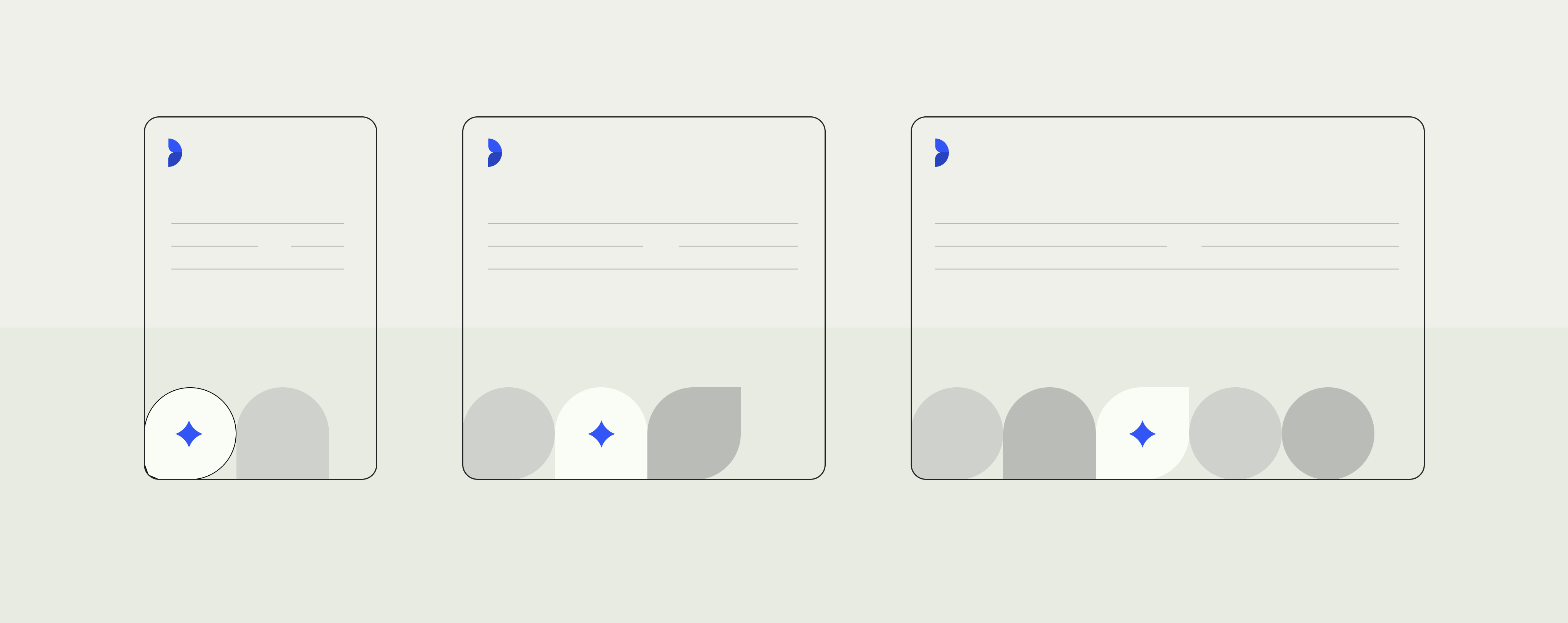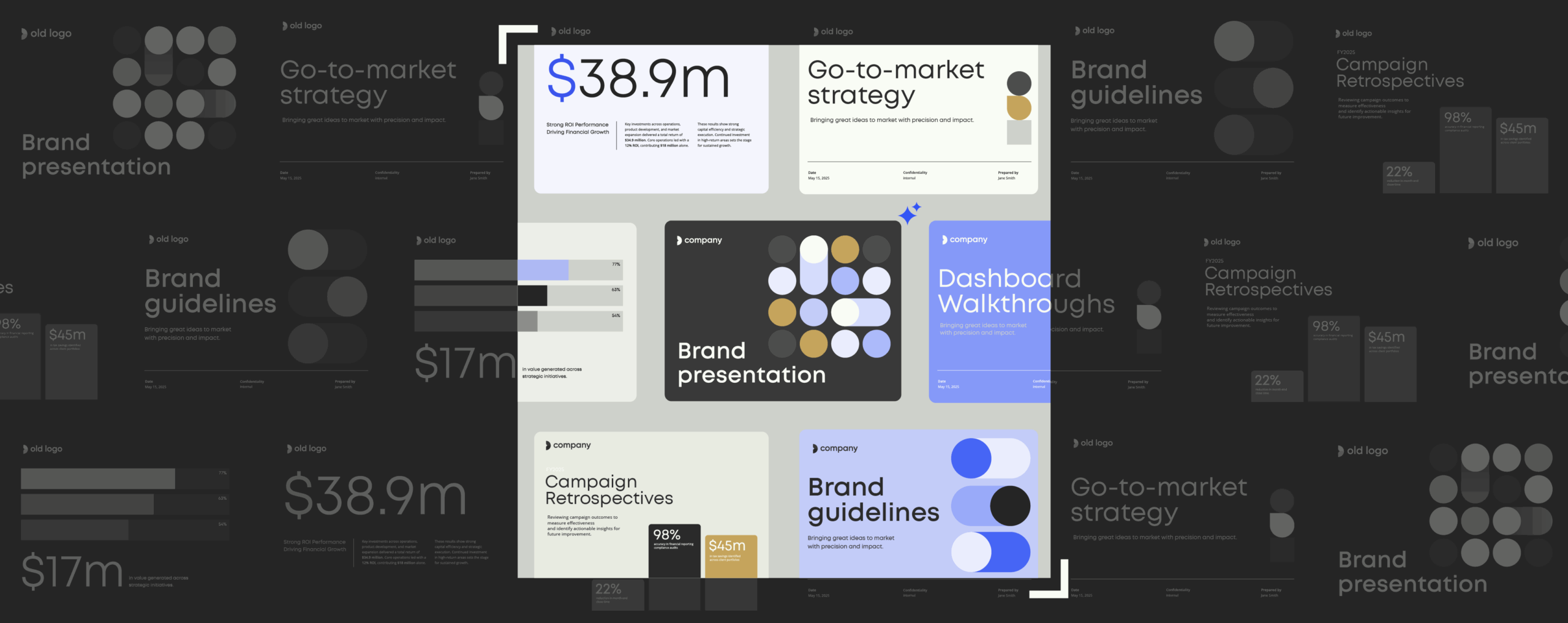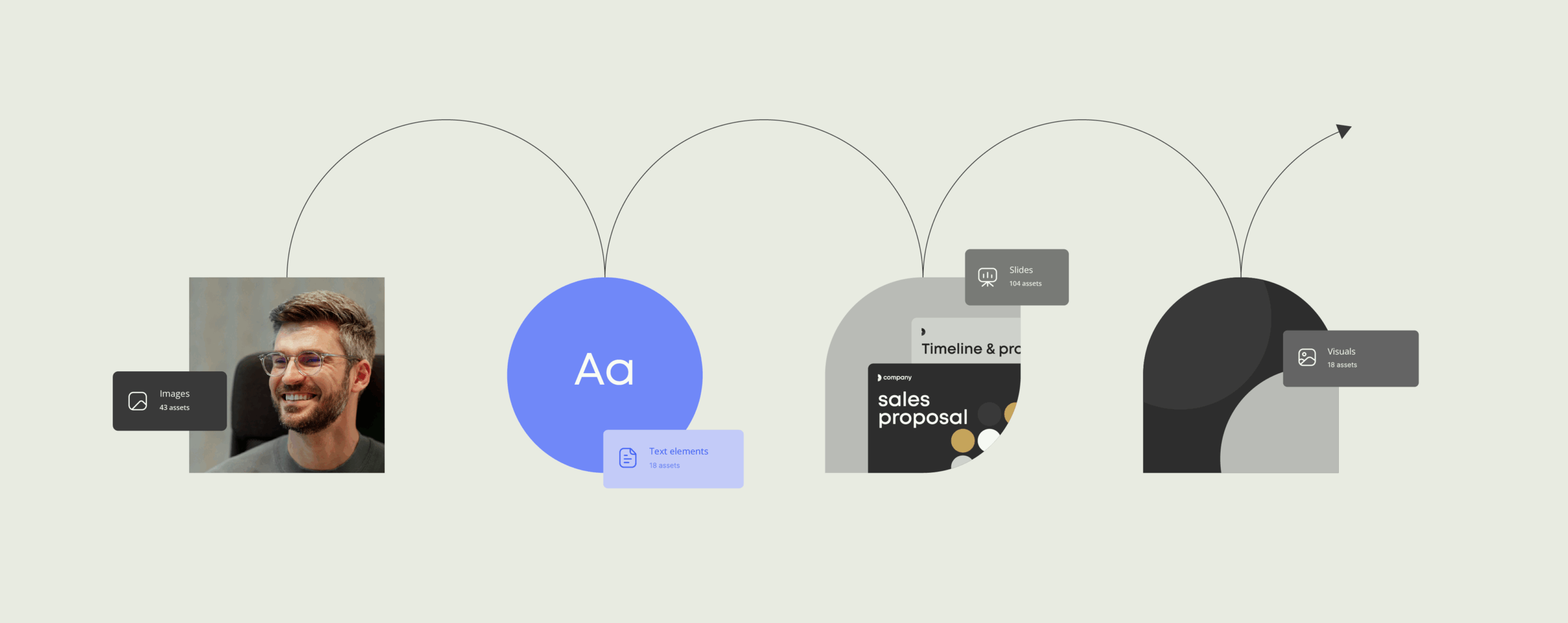Brand consistency: What it is, why it matters, and how to get it right

Trust, recognition, and revenue all start with making good branding a habit.
Back in ancient Norse villages, farmers would brand their cattle with a hot iron to set them apart from the herd. Fast-forward to today, and the “herd” is a global marketplace crowded with competitors. The purpose of branding, though, hasn’t changed. It’s still about making your mark and standing out.
The way modern companies achieve that is through consistency.
Think of the brands that are instantly recognizable—you’d know them from just a color, a font, or a few words in a tagline. That familiarity comes from brand consistency: the practice of showing up the same way, everywhere, every time. Done well, consistency turns logos into symbols and companies into names people trust.
In this article, we’ll explore why brand consistency is a rewarding business strategy. You’ll see how global leaders protect it, how retailers use it to boost sales, and how your team can put it into practice with the right tools.
What is brand consistency?
Brand consistency is the practice of showing up the same way every time your audience encounters you, whether that’s through an email campaign, a sales deck, a social post, or a billboard. The look, tone, and message should feel like they come from the same source. In modern marketing, where customers interact with brands across dozens of platforms, consistency is the glue that holds your identity together.
A consistent brand rests on three pillars: visuals, voice, and values.
Visuals include logos, colors, fonts, and design systems that make your brand instantly recognizable. Voice is the tone and language you use to communicate, whether it’s friendly, authoritative, playful, or professional. And values are the underlying beliefs and principles that guide how your brand shows up in the world. Together, these elements shape how people perceive you.
Why is brand consistency important?
Can’t-miss branding tips
Learn how to keep your brand consistent. Get ideas and examples to help your team create on-brand work with less effort.
Impact on customer trust and loyalty
At its heart, brand consistency is about trust. When customers see the same look, tone, and message across every interaction, they feel reassured that your company is stable and reliable. That familiarity creates confidence, and confidence leads to loyalty.
Research backs this up: Deloitte found that trusted companies outperform their peers by up to 400%, and customers who trust a brand are 88% more likely to buy again.
Influence on brand recognition and recall
The more often people encounter consistent branding, the quicker they can identify and recall it. Psychologists call this the mere exposure effect—the idea that people tend to develop a preference for things simply because they are familiar. In other words, the more often we see something presented in the same way, the more we trust it and the more positively we feel about it.
For companies, that familiarity is powerful. A consistent brand becomes a mental shortcut because customers don’t have to think twice to know who you are and what you stand for. Over time, repeated exposure to the same brand story builds recognition that feels natural and reliable.
Revenue benefits of consistent branding
Brand consistency is also good for your bottom line. Nearly 70% of businesses report that brand consistency has contributed to a 10-20% increase in revenue.
Beyond direct sales lift, this familiarity builds brand equity, the extra value your brand carries because people know and trust it. Whether through quick recognition, higher price tolerance, or easier new product launches, that emotional connection pays off long term.
How to maintain brand consistency across platforms
Maintaining brand consistency across platforms can be a challenge when teams are distributed around the world. The key is to make sure everyone has access to the same resources, follows the same rules, and uses tools that make it easy to stay on-brand. Here are four practical ways to make that happen.
1. Centralize you brand assets
One of the most effective steps is centralizing your brand assets—logos, templates, typefaces, images, and messaging—into a single hub. Instead of hunting through email threads or outdated folders, employees can quickly find the latest approved materials. This “single source of truth” approach helps simplify workflows and make it easy to produce a consistent visual identity.
2. Enforcing brand guidelines across all teams
Even the most strategic guidelines are useless if they live in a PDF no one reads. Maintaining brand consistency means weaving those rules into everyday workflows. That could mean embedding fonts and colors into templates, setting up approval processes for design work, or using tools that flag inconsistencies. The goal is to build processes that make it easy to stay aligned with the brand.
3. Training employees on brand usage
Employees are often the front line of your brand. That’s why training is critical, both for new hires and as a continuous process. Training should explain not only the “what” (your logos, tone of voice, colors) but also the “why” (why consistency builds trust and recognition). When people understand the impact, they are more likely to uphold the standards.
4. Using automation tools to prevent off-brand materials
Finally, technology can do a lot of the heavy lifting. Platforms like Templafy automate brand governance by embedding the latest content and guidelines directly into the tools employees already use, like Microsoft Office or Google Workspace. That means fewer off-brand assets slipping through the cracks.
Brand consistency check-in
| What to do | Why it matters | Tools/tips |
|---|---|---|
| Audit brand materials regularly | Flags areas where processes aren’t being followed or need to be improved. | Quarterly audits led by brand/marketing teams; cross-department spot checks. |
| Track key metrics and benchmarks | Provides measurable proof of whether brand consistency efforts are working. | KPIs may include Net Promoter Score (NPS), brand recall surveys, and compliance rates in internal reviews. |
| Use tools for brand compliance monitoring | Reduces manual policing of brand standards and ensures every employee stays on-brand. | Platforms like Templafy integrate directly into Office and Google Workspace to support guidelines at scale. |
How to coordinate your brand
A brand is made up of many moving parts, both visual and verbal, that need to work together across every channel. Here are the key brand elements to keep consistent.
Visual elements
Visuals are often the first thing customers notice, and they set the stage for how your brand is perceived. Consistency here builds recognition and credibility.
- Logo: Your logo is the cornerstone of your identity. Keep it clear, simple, and used in the same way across platforms.
- Color palette: Colors spark emotion and shape perception. Define a set of brand colors and stick with them to keep your materials cohesive and memorable.
- Typography: Fonts bring structure and personality. Choose a primary and a secondary font, and use them consistently across all content.
Messaging and tone
Words matter just as much as visuals. Your voice and tone reflect your personality and help build stronger connections with your audience.
- Voice: This is your brand’s personality. It should stay consistent everywhere your brand makes an official appearance.
- Tone: While the voice stays the same, the tone can shift with context—formal in a press release, conversational on social media. Keeping tone consistent within each context makes communication feel natural and trustworthy.
- Messaging: Align all messaging with your brand’s values and goals. Clear, direct messages avoid confusion and build credibility.
Additional content
Considering a rebrand for your organization?
Are you prepared to elevate your brand to new heights? Don’t miss a step in your new brand launch.


How to build long-term brand consistency
Building a brand governance framework
Every long-lasting brand has a clear governance framework. This defines who owns the brand and how decisions are made and communicated. A strong framework includes documented brand guidelines, approval processes, and regular check-ins to keep teams aligned and compliant.
Leveraging technology to scale brand consistency
Maintaining brand consistency gets harder as companies grow. Teams that are spread across offices and time zones need tools that make it simple to stay on-brand. Technology can help scale governance by embedding the right assets and rules directly into daily workflows. Document automation platforms, digital asset management systems, and tools like Templafy ensure that every employee has access to the latest templates, logos, and messaging, no matter where they are.
Adapting brand guidelines for new markets and channels
Finally, consistency doesn’t mean rigidity. As your business expands into new markets or channels, guidelines should evolve without losing the core identity. For example, a global campaign might keep the same logo and brand colors but adapt imagery or copy to resonate with local culture. Similarly, tone may flex between a website, a TikTok video, or a press release. The key is balance: guidelines should be flexible enough to stay relevant while still ensuring the brand feels unified everywhere it appears.
The power of breaking the rules
Consistency is essential, but so is knowing when to bend or even break the rules. A famous example is Nike’s “Dream Crazy” campaign featuring former NFL quarterback Colin Kaepernick. With the tagline “Believe in something. Even if it means sacrificing everything. Just do it.”, the ad took a bold stand on racial injustice. Visually and tonally, it stepped away from Nike’s usual playbook. The gamble paid off, earning Nike an Emmy and sparking worldwide conversation.
But here’s the catch: Nike could afford that risk because decades of consistency had already cemented its brand identity. The swoosh, the slogan, and the company’s association with pushing boundaries gave the campaign credibility rather than confusion.
For most brands, the lesson is not to abandon the rules, but to understand them so well that you know when breaking them will strengthen your message instead of weakening it. Consistency builds the foundation. Strategic rule-breaking, done sparingly and with purpose, can create moments that cut through the noise and resonate deeply with audiences.
How Templafy helps maintain brand consistency
For enterprise businesses, maintaining a consistent brand story is always a balance between efficient workflows and continuous brand monitoring. Templafy helps by embedding brand guidelines directly into the way people work, making it easy for everyone to stay on brand, while giving brand teams centralized control over brand updates.
Centralized template and asset management
Templafy gives organizations a single source of truth for all brand assets. Logos, templates, images, and messaging are stored in one central hub, making it easy for employees to find and use the latest approved materials. Dynamic templates adapt automatically based on user profiles, so content is not only compliant but also tailored to the right business unit, region, or audience. This eliminates version confusion and ensures that every document reflects the latest brand identity.
Automated compliance checks in documents and presentations
Maintaining brand consistency also means protecting compliance. Templafy automates this process by embedding brand rules directly into documents and presentations. Disclaimers, legal text, and product information update automatically, and the platform flags outdated or incorrect content before it goes out the door. This reduces the risk of off-brand communication and helps safeguard corporate integrity across all channels.
Integration with existing workflows
Training and onboarding are easy because Templafy integrates directly with the tools employees already use like Microsoft Word, PowerPoint, Outlook, Google Workspace, and leading DAM systems. Brand-approved templates, assets, and guidelines appear within those familiar environments, so staying on-brand becomes the natural way of working—not an extra step.
additional content
How Ramboll maintains consistent corporate brand identity
“The biggest change overall since implementing Templafy is an increased feeling of control over the documents and presentations used throughout Ramboll.” – Roos Nederveen
Senior Consultant Corporate Branding, Rambol
Consistency is a habit, not a project
Brand consistency is an ongoing practice that grows stronger the more you invest in it. The brands that endure are the ones that treat consistency as part of their culture, not just their design system.
Looking ahead, the challenge is not only to keep your colors and fonts aligned but to ensure your brand story stays unified as your business expands, merges, or adapts to new markets and technologies. That requires strong brand governance, modern asset management, and the ability to evolve without losing sight of what makes your brand unique.
Ready to take control of your brand? See how Templafy ensures brand consistency across every document with a personalized demo.
Or download our checklist on how to become one of the world’s top 500 most valuable brands.



